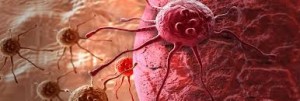Source: Flickr user Erik Soderstrom.
Cancer is possibly the scariest diagnosis a patient can be provided. Inside the United States cancer is the second-leading bring about of death behind only heart disease. It was accountable for almost 577,000 deaths in 2011 — primarily one particular out of every five deaths.
What is specifically scary about cancer is that researchers are still in the dark as to what causes cancer, how it triggers, and in several instances how to fight it. In spite of throwing billions upon billions of dollars at cancer investigation, we’ve only managed to marginally enhance general survival for some cancer varieties, such as lung cancer and pancreatic cancer, more than the previous four decades.
Don’t get me incorrect, researchers do have a superior notion as to what can improve a person’s threat of obtaining cancer –smoking or extended-term sun exposure, for example — but differentiating why some smokers reside to be healthier effectively into their 90’s whilst a individual who eats suitable and exercises often gets cancer in their 40’s has often stumped researchers and customers alike.
In case you missed it, this is terrifying news
A new study out this past week from Johns Hopkins Medicine potentially answers this question, although the answer is downright terrifying.
 Breast cancer cell. Source: Wikimedia Commons.
Breast cancer cell. Source: Wikimedia Commons.
According to Johns Hopkins researchers roughly two-thirds of all cancer circumstances are the result of random mutations in genes that can lead to cancer development. In plainer terms, two-thirds of all cancer cases are really practically nothing a lot more than a result of poor luck. Researchers described these changes as minute alterations in the DNA of our stem cells that can lead to cancerous growth in specific genes. If the number of mutations accumulates, a person can potentially develop cancer.
The study did, nevertheless, uncover some exceptions (i.e., the remaining one particular-third of cancer instances). The two researchers major the study found that smoking can raise a users’ possible to get lung cancer, long-term exposure to the sun can potentially lead to skin cancer, and some types of cancer are influenced by genetics and whether or not members in your loved ones have had a certain form of cancer. Stated cancer researcher Bert Vogelstein, “All cancers are brought on by a combination of bad luck, the environment, and heredity.”
What this study definitely implies
To be clear, this study doesn’t imply that now is the time to cancel your wholesome diet, stop exercising, and take up smoking. Evidence is nonetheless plentiful that poor life-style habits can exacerbate your opportunity of finding cancer.
Source: National Cancer Institute, Wikimedia Commons.
Nevertheless, it also means that merely living a healthier life style and consuming ideal may not be adequate to maintain a particular person from receiving a cancer diagnosis for the duration of their lifetime. Per the Surveillance, Epidemiology, and Finish Benefits Program, a branch of the National Cancer Institute, about 40.4% of males and females will be diagnosed with cancer at some point in the course of their lifetime, primarily based on information amongst 2009 and 2011. This high diagnosis rate could certainly be explained by random gene mutations as described by Johns Hopkins’ study.
If there was one message that genuinely came out of Johns Hopkins study it’s that we will need much more effective diagnostic tests to detect cancer. The crucial to beating or successfully managing cancer more than the long-term is to catch it early just before it spreads into the lymph nodes or to other organs where remedy can grow to be difficult.
To that finish, the very good news is we have noticed a surge in the number of new cancer-detecting and assisting diagnostics that have hit the market place.
Diagnostic tests that could save lives
A single of the far more fascinating diagnostic tests approved by the Meals and Drug Administration in recent memory is Cologuard, which was created by Exact Sciences .
sDNA capture lab. Supply: Exact Sciences.
Cologuard is a non-invasive colorectal cancer screening test that analyzes a patients’ stool sample (which is sent to Precise Sciences’ lab). The diagnostic operates by examining the DNA of cells shed on the sample sent to Precise Sciences’ lab for evaluation. Standard cells are on a regular basis shed from the inner walls of the intestines, but Cologuard is made to detect mutations in that DNA. If a test comes back as positive for colorectal cancer or an advanced adenoma, it would signal to the patient that he or she should undergo a additional thorough diagnostic colonoscopy.
In clinical studies that led to Cologuard’s approval, Cologuard positively identified 92% of all colorectal cancer and 42% of all advanced adenomas compared to the previous noninvasive normal of care which identified 74% of all colorectal cancer and 24% of advanced adenomas. Even though not excellent, Cologuard is a clear step forward in early diagnostic technology.
Yet another exciting below-the-radar early diagnostic test that could work its way into the spotlight in coming years is EarlyCDT (quick for Early Cancer Detection Test), a lung cancer detection test created by privately held Oncimmune and partnered in a handful of U.S. markets with Enzo Biochem . EarlyCDT-Lung operates by utilizing a panel of tumor antigens selected mainly because of their involvement in cancer improvement and measuring the amount of autoantibodies that circulate throughout the body. The measurement can inform researchers no matter if or not there is a higher probability of cancerous cells being present.
Supply: Myriad Genetics.
Possibly the most prevalent example of an early diagnostic test geared at cancer detection or prevention is Myriad Genetics’ BRACAnalysis. This diagnostic tool, produced well-known by actress Angelina Jolie which utilized it to decide she was at a higher risk of building breast and/or ovarian cancer, analyzes regardless of whether an individual is a carrier of the BRCA1 or BRCA2 gene mutations. These mutations correlate with a larger danger of acquiring breast or ovarian cancer in ladies. The concept here would be that ladies who are optimistic for these mutations should really be especially diligent about obtaining normal breast and/or ovarian exams.
Clearly the idea that cancer can take place at random isn’t what individuals want to hear. Thankfully diagnostic developers are functioning toward the purpose of generating more early detection kits and creating a vast majority of them very affordable sufficient for the typical American. There is nonetheless a lot of work left to be done, but we’re certainly on the correct path.
The report In Case You Missed it, This New Cancer Study is Terrifying originally appeared on Fool.com.
Sean Williamshas no material interest in any companies pointed out in this post. You can follow him on CAPS under the screen nameTMFUltraLong, track each choose he tends to make beneath the screen nameTrackUltraLong, and check him out on Twitter, exactly where he goes by the deal with@TMFUltraLong.The Motley Fool has no position in any of the stocks pointed out. Attempt any of our Foolish newsletter servicesfree for 30 days. We Fools never all hold the exact same opinions, but we all believe thatconsidering a diverse variety of insightsmakes us far better investors. The Motley Fool has adisclosure policy.
Copyright 1995 – 2015 The Motley Fool, LLC. All rights reserved. The Motley Fool has a disclosure policy.
+ Adhere toFox Enterprise on Facebook
Our editors found this article on this site using Google and regenerated it for our readers.














